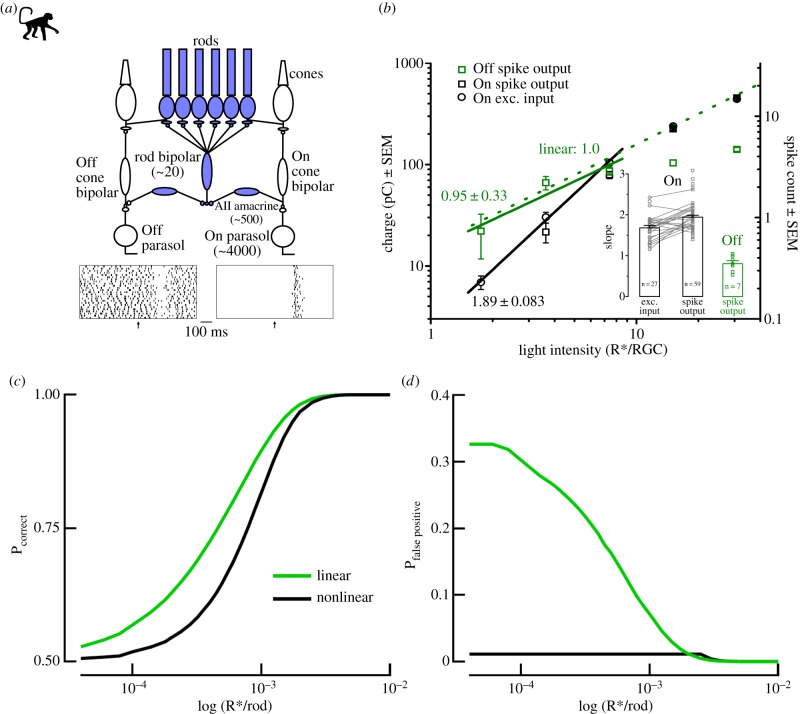Figure 1.
Nonlinearity in the On but not in the Off pathway near the absolute threshold. (a) Top: schematics of the rod bipolar pathway in the primate retina. Near the absolute threshold, the primary Off and On pathways (rod bipolar pathway) share the circuitry up to the AII amacrine cell (highlighted in blue). The synapse between On cone bipolar cells and ganglion cells not only operates as a thresholding nonlinearity to reduce noise, but also limits information about single photons. The numbers shown in the diagram indicate the number of rods converging on a particular cell type. Spike responses to dim flashes are shown for an Off (left) and On parasol cell (right) at the bottom. (b) The stimulus–response relationship for primate Off and On parasol cells near absolute threshold. At very low light levels (a few R* per RGC), both the spiking responses (black squares) and excitatory input currents (black circles) of On cells show supralinearity, while the spiking responses of Off cells (green squares) show a linear relationship. The dashed line shows a linear relationship as a reference. Inset: the slopes of the stimulus-response relationship measured at low-light intensities for the excitatory synaptic current to On (left), spike response of On (middle) and spike response of Off (right) parasol cells. (c) Dim-flash detection performance predicted by a nonlinear (black) and linear (green) model. The nonlinear model is in line with the On parasol responses while the linear model predicts Off cell responses. (d) The false-positive rates predicted by the model in (c). Adapted with permission from Ala-Laurila & Rieke [16].

